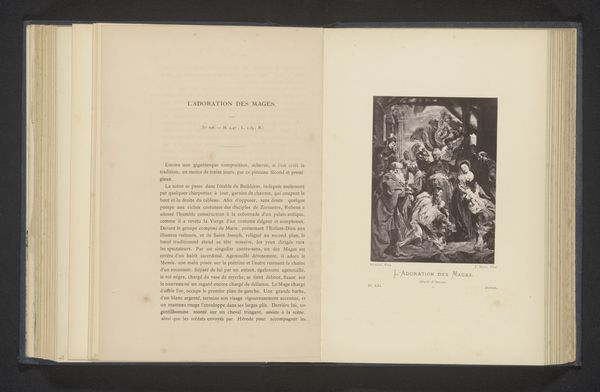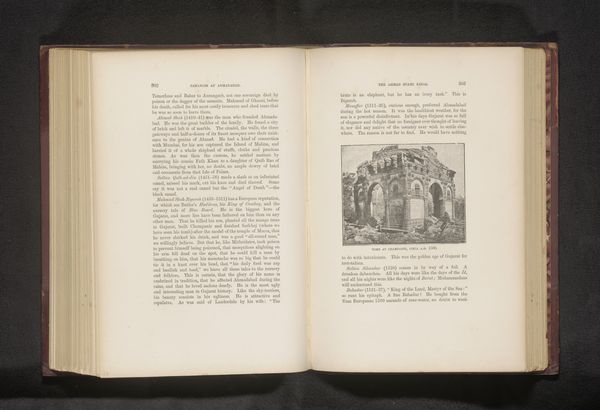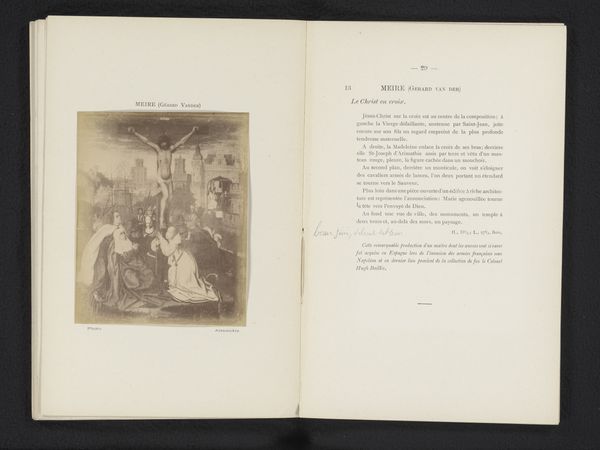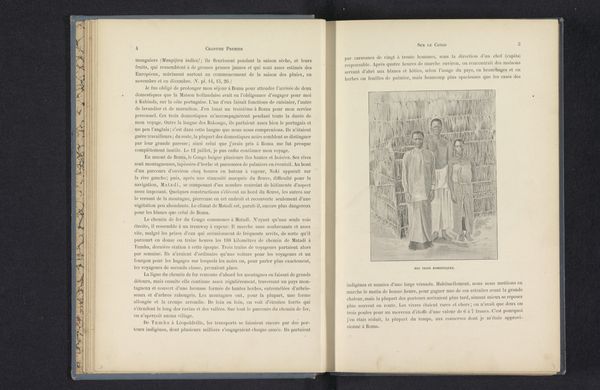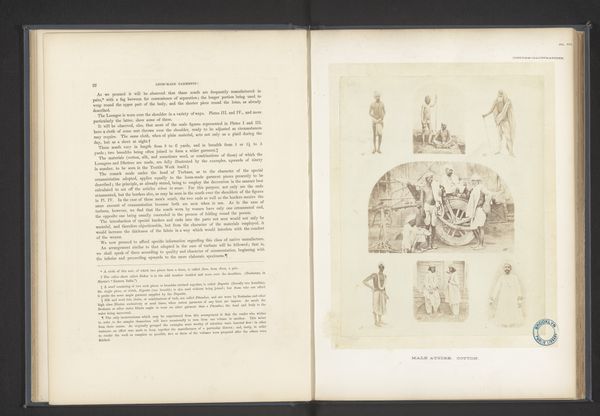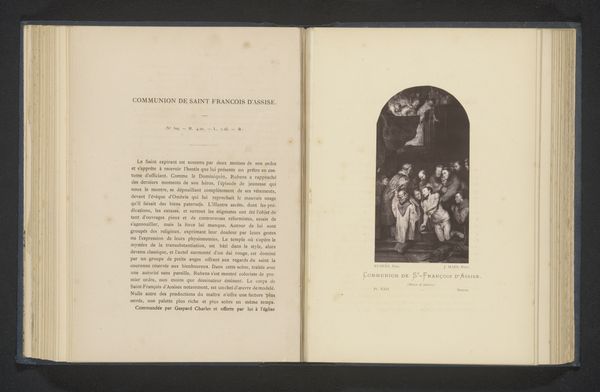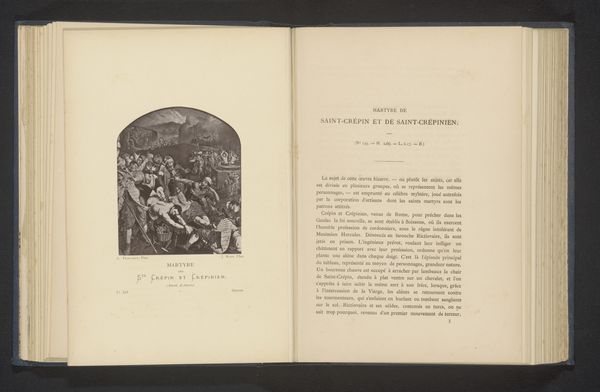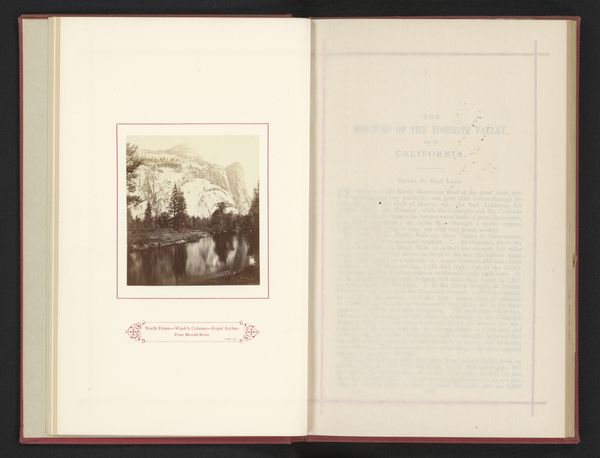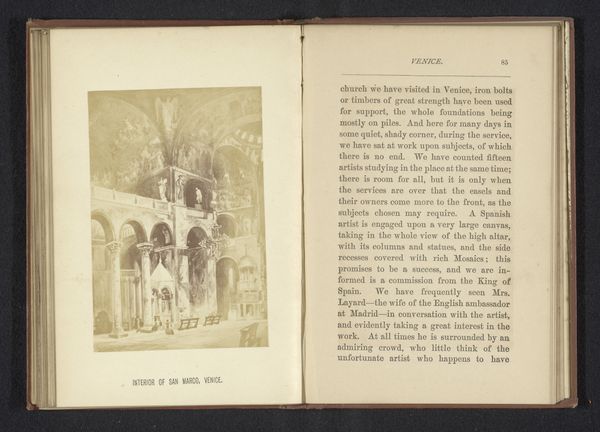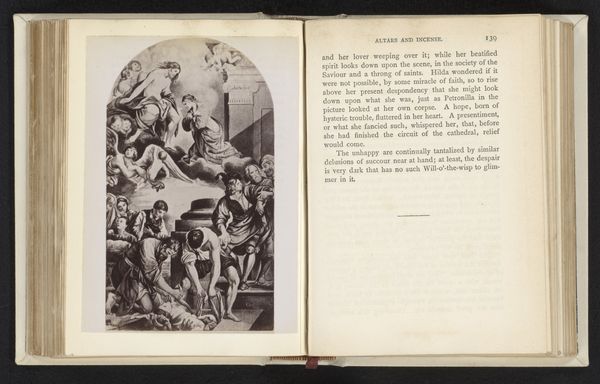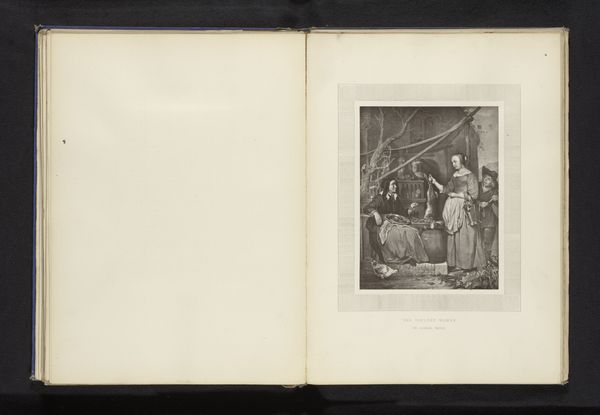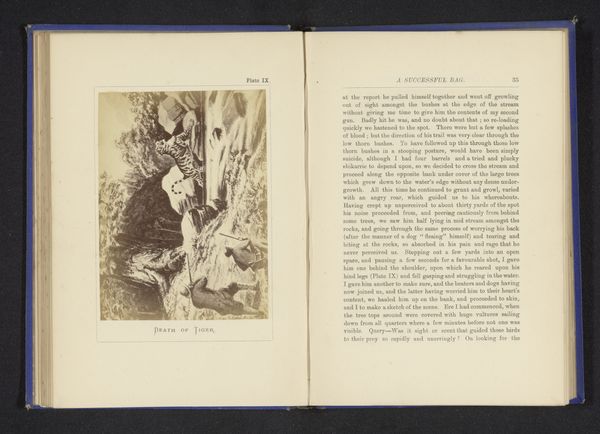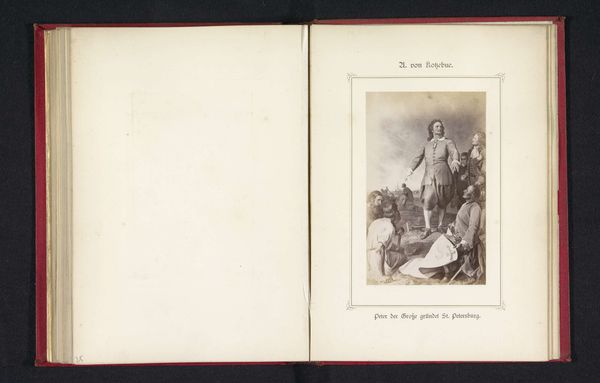
Fotoreproductie van een prent naar een fresco van Giotto, voorstellend de bewening van Franciscus van Assisi door Clara van Assisi before 1870
0:00
0:00
print, paper, fresco, engraving
#
medieval
# print
#
figuration
#
paper
#
fresco
#
history-painting
#
italian-renaissance
#
engraving
Dimensions: height 111 mm, width 102 mm
Copyright: Rijks Museum: Open Domain
This is a photoreproduction of a print after a fresco by Giotto, depicting the mourning of Francis of Assisi by Clare of Assisi. The image's starkest symbol is the recumbent body of Saint Francis, surrounded by mourners, their faces etched with grief. Consider the recurring motif of the lamentation. It echoes in countless images across cultures, from ancient Greek burial scenes to Renaissance depictions of Christ's deposition. The gesture of mourning, the bowed heads, the outstretched hands—these are "pathos formulas," visual vocabularies that tap into our shared human experience of loss. Take, for example, the gesture of a hand placed upon the deceased. Here, it signifies not only sorrow but also a desperate attempt to maintain a connection with the departed. This gesture transcends time, appearing in ancient Roman funerary reliefs and medieval icons alike. It speaks to a universal human impulse to defy death through physical contact, a primal scream against the void. The image thus becomes a vessel of collective memory, engaging viewers on a subconscious level. The motifs of mourning are not merely artistic conventions but powerful forces that resonate with our deepest fears and desires. The image reminds us how the past resurfaces, evolves, and takes on new meanings in different historical contexts.
Comments
No comments
Be the first to comment and join the conversation on the ultimate creative platform.
